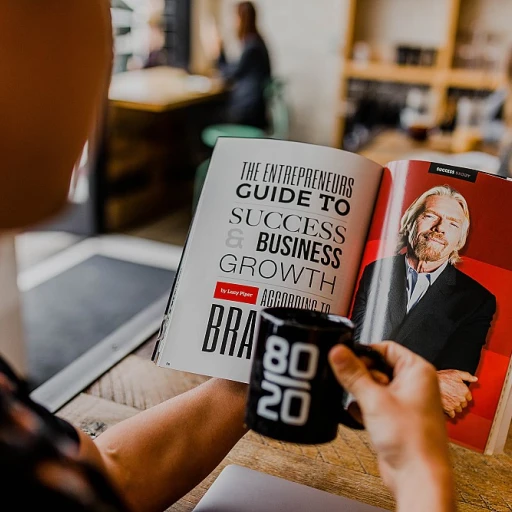
Understanding the Importance of Standard Work Training
Recognizing the Significance of Standard Work in Training
Standard work training is a cornerstone in the development of effective training presentations, especially in environments that thrive on precision and efficiency, such as lean manufacturing. The essence of standardized work lies in creating a documented best practice for carrying out operations. It's about defining a work sequence, identifying key work elements, and setting them into a structured format, usually in the form of a work sheet or work chart.
Incorporating standard work into training helps create consistency across different roles and responsibilities within an organization. This consistency is what ensures every team member is on the same page, focusing not only on what to do but also on how and why they are doing it. Such clarity is crucial when it comes to lean standard practices, enabling smoother processes and reduced errors, thereby enhancing production efficiency.
Furthermore, implementing these standards aids in establishing a baseline for measuring performance and identifying areas for continuous improvement. By understanding the importance of these factors, trainers can design presentations that align with the desired training module outcomes. These presentations are not just about conveying information; they're about transforming it into actionable skills that adhere to the predicted customer demand and optimal cycle time.
Using a structured approach allows trainers to build presentations that respect the natural process capacity while minimizing wait time and optimizing takt time. This strategic alignment fosters an environment where lean principles are not just aspirational but operational realities, leading to tangible improvements across the board.
For those looking to delve deeper into enhancing their training modules using these concepts, a useful resource is available on effective upskilling techniques.
Key Elements of an Effective Training Presentation
Crafting a Compelling Narrative
Creating an effective training presentation begins with a compelling narrative. This involves structuring your content in a way that logically flows from one point to the next. Start by outlining the key work processes and standard work elements that are crucial to your training module. This approach not only helps in maintaining a clear focus but also ensures that the audience can easily follow the presentation.
Incorporating Visual Elements
Visuals play a significant role in enhancing understanding and retention. Utilize slides to break down complex processes into manageable steps. For instance, a work chart or combination table can illustrate the work sequence and process capacity, making it easier for trainees to grasp the lean manufacturing principles. Remember, each slide should focus on a single idea to avoid overwhelming your audience.
Emphasizing Standardized Work
Standardized work is the backbone of any effective training presentation. Highlight the importance of lean standards and leader standard work in achieving continuous improvement. By emphasizing these elements, you reinforce the significance of maintaining consistency and quality in the workplace. This not only aligns with the production standards but also meets customer demand efficiently.
Engaging Through Interaction
Engagement is key to a successful training session. Encourage interaction by incorporating questions and discussions at various points in your presentation. This can be particularly effective when discussing takt time and cycle time, as it allows trainees to relate these concepts to real-world scenarios. Interactive elements help in reducing wait time and keeping the audience actively involved.
For more insights on enhancing your training presentations, consider exploring resources like navigating the Kiran Academy login for effective upskilling.
Tailoring Presentations to Diverse Learning Styles
Adapting Training to Cater to Different Learning Preferences
Crafting an effective training presentation requires an understanding of different learning styles, which can significantly influence the success of skill enhancement initiatives. In any workplace environment, training modules must accommodate various preferences to ensure all employees gain the expertise they need. To achieve this, consider the following approach to tailor presentations effectively. First, recognize that individuals absorb information differently. Some learners gravitate towards visual aids, while others appreciate detailed verbal explanations or hands-on activities. Incorporating diverse elements in your presentation, such as engaging ppt slides or interactive work charts, can cater to these variant preferences. For example, visual learners benefit from a rich use of graphics, diagrams, and lean manufacturing process charts that depict standardized work and cycle times. Additionally, auditory learners might find value in presentations supplemented with verbal narratives or recordings of step-by-step process explanations. Integrating audio materials, whether live or pre-recorded, allows learners to revisit complex work sequences or leader standard work elements at their convenience. Kinesthetic learners, those who learn best through practice and movement, require opportunities for active participation. Incorporate activities like role-playing or practical sessions where trainees can physically engage with the tasks at hand. Using training modules that focus on real-world application ensures the work process becomes more ingrained. Moreover, the use of technology can significantly enhance these tailored presentations. By leveraging digital platforms, training can incorporate interactive elements and simul-casts, allowing for a dynamic and immersive learning experience. Adaptations like these not only fit the diverse learning styles but also encourage continuous improvement by enabling employees to learn at their own pace. Finally, ensure that your presentation process is inclusive by constantly seeking feedback and measuring the impact. This step is crucial in maintaining standards across the board, allowing facilitators to make informed adjustments where necessary. By acknowledging the diverse preferences of learners, training presentations can become more effective and engaging. For more strategies on enhancing workplace skills, explore our comprehensive guide on enhancing skills for the future in this deep dive into upskilling. This resource offers valuable insights into improving training initiatives for the current workforce dynamics.Utilizing Technology to Enhance Training
Leveraging Technology for Enhanced Training
In today's rapidly evolving workplace, utilizing technology in training presentations is not just an option; it's a necessity. The integration of technology can significantly enhance the effectiveness of training modules, especially when dealing with complex concepts like lean manufacturing or standardized work processes.
One of the primary benefits of using technology is the ability to create dynamic and interactive presentations. Tools like PowerPoint (PPT) allow trainers to incorporate multimedia elements such as videos, animations, and interactive slides. These elements can help illustrate work sequences and work charts more vividly, making it easier for trainees to grasp the standard work cycle and process capacity.
Moreover, technology facilitates the creation of standardized training materials that can be easily updated and distributed. This ensures that all employees receive the same information, maintaining consistency in training across different departments or locations. For instance, a standardized work sheet or combination table can be shared digitally, allowing for quick updates as processes improve or customer demand changes.
Another advantage is the ability to track and measure the impact of training presentations. Digital platforms can provide analytics on trainee engagement and comprehension, offering insights into which elements of the presentation are most effective. This data-driven approach supports continuous improvement in training methods, aligning with lean principles.
However, it's crucial to remember that technology should complement, not replace, the human elements of training. Trainers should still focus on clear communication and engagement, ensuring that the technology enhances rather than detracts from the learning experience.
Measuring the Impact of Training Presentations
Evaluating the Effectiveness of Training Presentations
Once a training presentation is over, the real challenge begins: measuring its impact. This is a critical step not only to ensure that the objectives have been achieved but also to highlight areas where you can implement continuous improvement. To effectively assess the outcomes, follow a structured process focusing on these key factors.
- Define Clear Objectives: Establishing clear and precise objectives at the outset sets the foundation for evaluation. Every training presentation should aim to meet predetermined goals aligned with both workplace standards and employee needs. This ensures consistency and provides a benchmark against which success can be measured.
- Feedback Mechanisms: Collecting feedback is an essential part of the evaluation process. Utilize surveys and one-on-one interviews to gather insights from participants. This feedback should highlight the strengths of the presentation and areas requiring improvement.
- Monitor Performance: Observation of workplace performance post-training offers tangible insights into the efficacy of the training. Look into metrics such as cycle time, takt time, and process capacity to assess whether the training has enhanced productivity and adhered to lean manufacturing principles.
- Utilize Standard Work Charts: Analyze standardized work charts and tables like work combination sheets to oversee the alignment with lean standards. This will help identify the seamless integration of training insights into the daily work process.
- Assess Process Improvements: Evaluate whether there is a noticeable improvement in work processes and standard work procedures. Adapting leader standard work techniques can further aid in understanding the presentation's influence on production standards and improvement.
By aligning these methodologies, training modules can be fine-tuned for future effectiveness. Remember, the training cycle doesn't conclude once the presentation ends; rather, it marks the start of a new cycle of learning and improvement in the workplace.












